Guest from the Asian South-East - Aglaionma (Aglaonema), despite its spread in warm and wet India, Thailand, Vietnam and China, grows perfectly and develops in the conditions of home. Today is a popular indoor flower.
For the first time about this plant, it became known at the beginning of the eighteenth century in the Philippines. The name was given a flower a century, Botany from Austria. It was formed from two Greek words: "Aglos" - bright and "NEMA" - thread.
Appearance of Agronam:
- This is a bush flower having a smooth and straight trunk, a height of 30 to 80 cm;
- foliage in aglaoneama dense and large, having long stiffs;
- The color of the leaves is distinguished by the shades of greens, with a variety of fortifications of several colors;
- The plant has no more than 3 inflorescences resembling the pillage;
- On inflorescences you can see the fruits, the red peel of which is very highlighted against the background of the green of plants.
20 most popular agolauna varieties
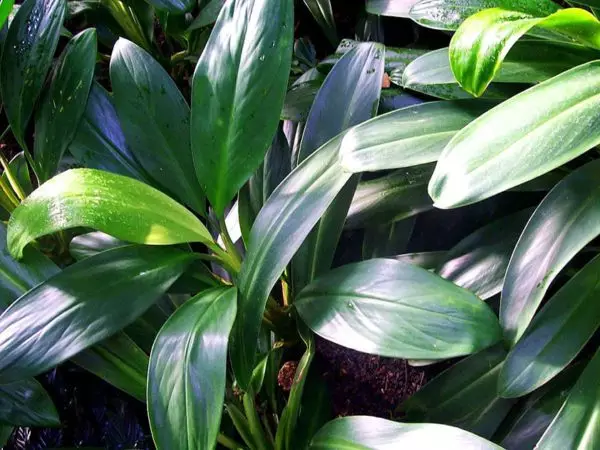
Aglionm "Brilliant"
Aglionm "Kudryavaya"
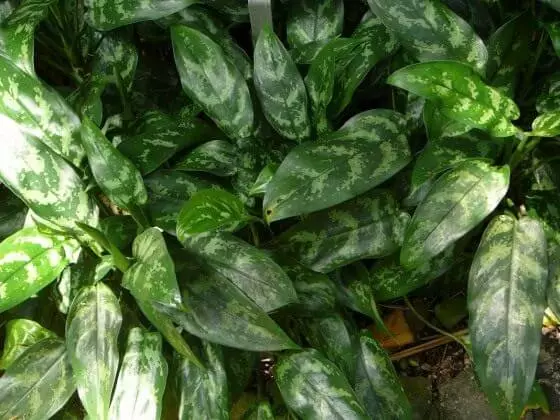
AGLONEM "Changes"
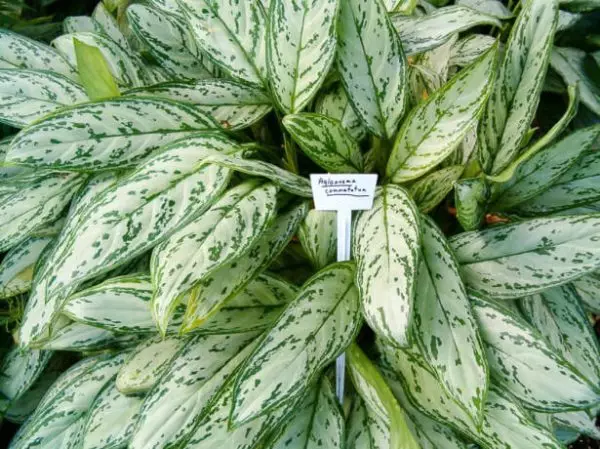
Aglionm "Silver Queen"
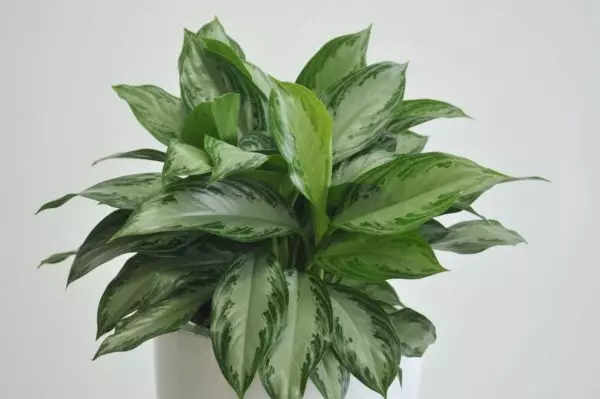
AGLONEMA "SILVER BAY"
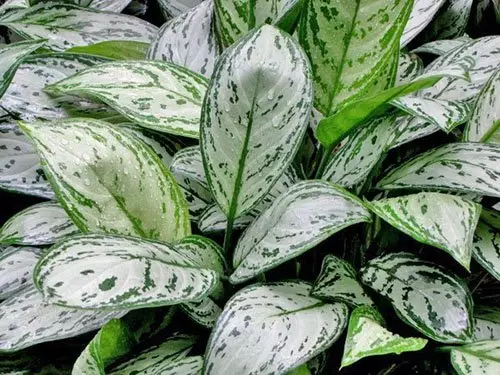
Aglionm "Maria Kristina"
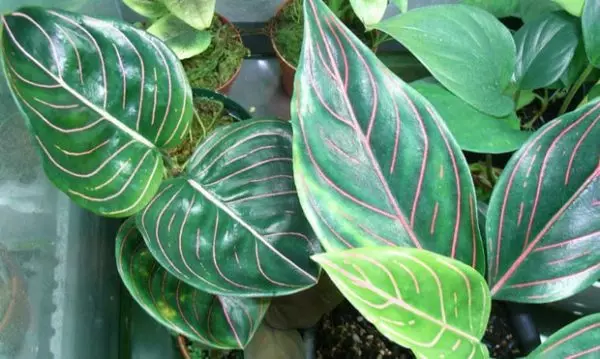
Aglionm "Round"
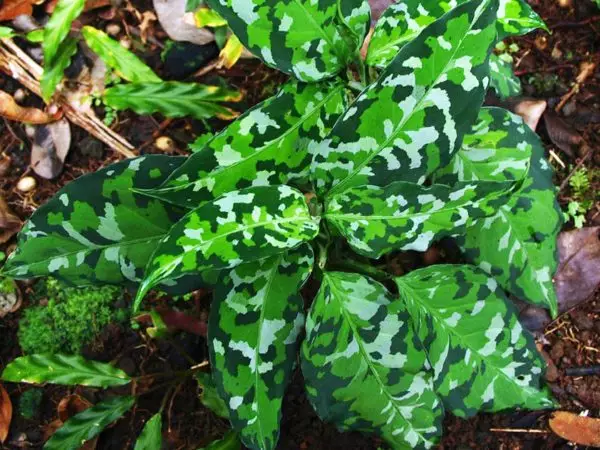
Aglionm "Painted"
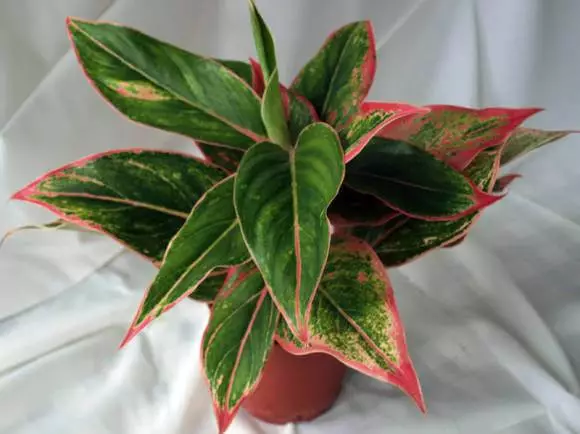
Aglionm "Tivoli"
AGLAONEMA "AGLAONEMA STRIPES"
Low aglanees
Separately, it is worth noting the lowest varieties of this plant, they rarely grow up above 25 cm, stems usually slightly drooped or creeping.
- "Ribrant": it is characterized by small growth and a barrel that crawls underground. Very attractive flowering of this variety, which begins in winter. Inflorescences reach 10 cm and are in the pillars stage just a few days. These types of this variety are very popular:
- "VireSCENS" - with a foliage of white and green vest in the center;
- "Costatum" - has spotted leaves;
- "Soncolor" - decorated with traditional green leaves;
- "Immaculatum" - with white-colored foliage.
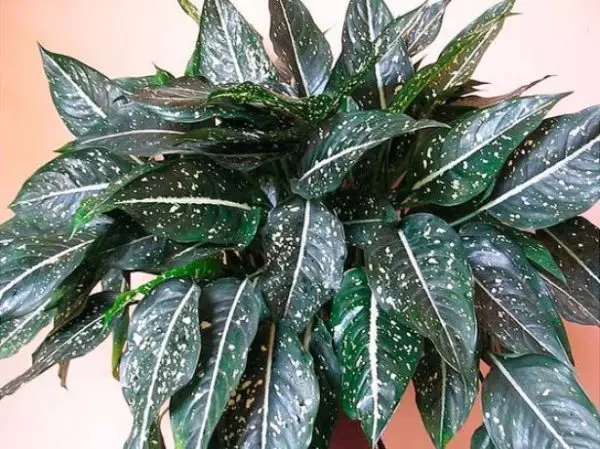
AGLONEM "Ribrant"
- "Short-step": it is characterized by stems hidden in the soil, from which only leaves are visible on the surface. The latter have an elongated shape, with sharp ends and gently green with a white streak in the center.
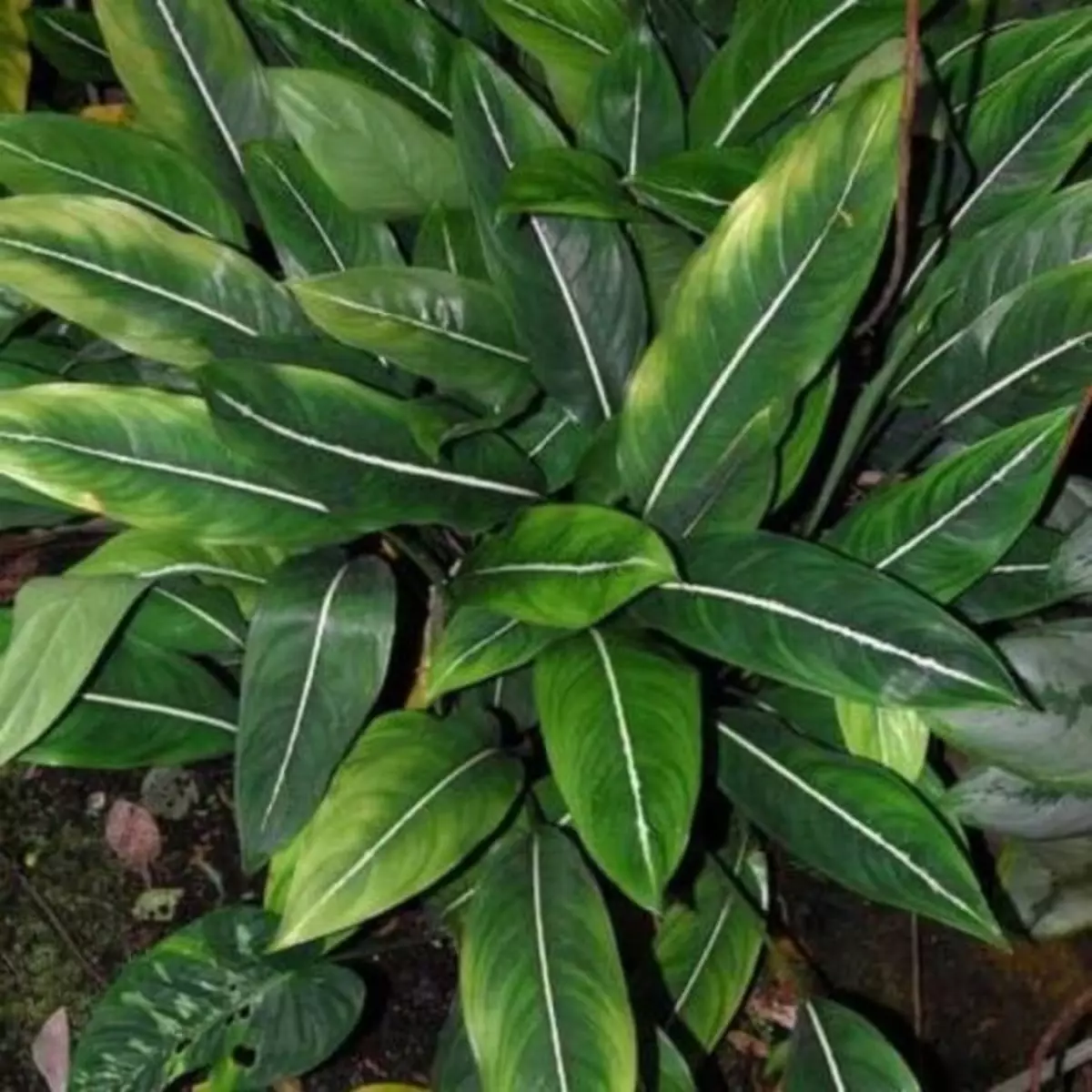
Aglionm "Short-Power"
- "Round": attracts purple-black-shaped leaves in the shape of a heart, with a small pattern of pinkish strips.
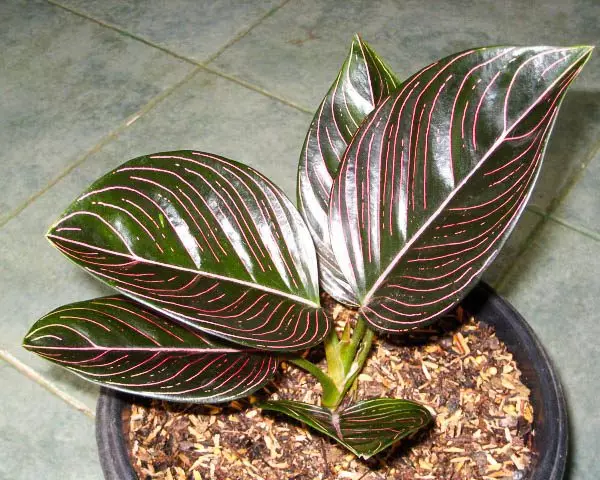
Aglionm "Round"
The average grades
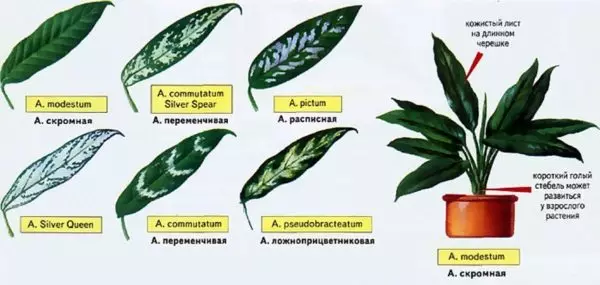
These varieties are distinguished by the medium bushes (about 30 cm), they characterize the long foliage and direct trunks. The most popular such varieties:
- "Maria": It has a very thick crown of the rich color of the emerald. This species grows perfectly in the shade and with artificial lighting.
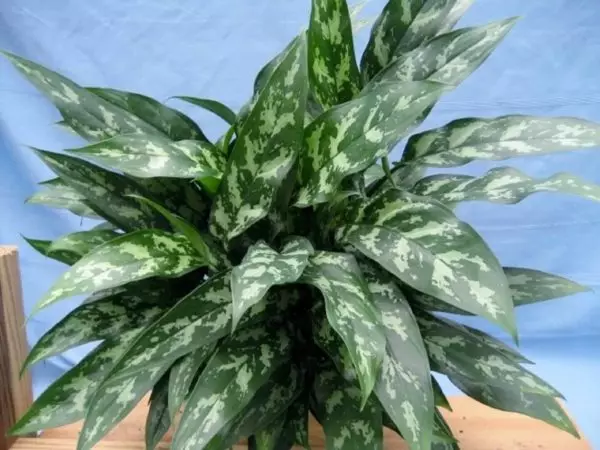
AGLONEM "MARIA"
- "Tray": decorated with miniature (about 15 cm) green leaves with a silver shade pattern.
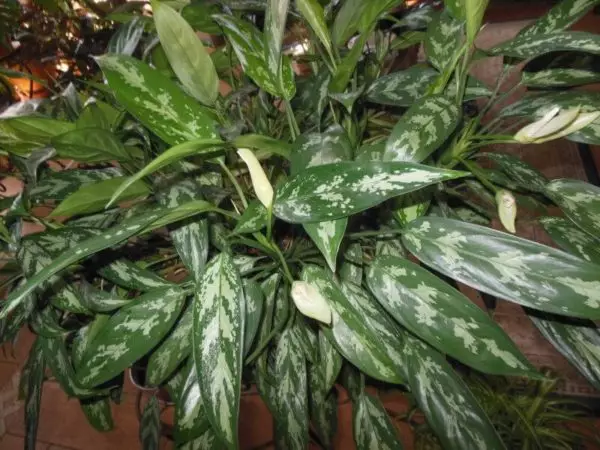
Aglionm "Tray"
- "Modest": grows up to half a meter in height. Different with foliage, resembling a circle form, with pointed tips and discovering veins.
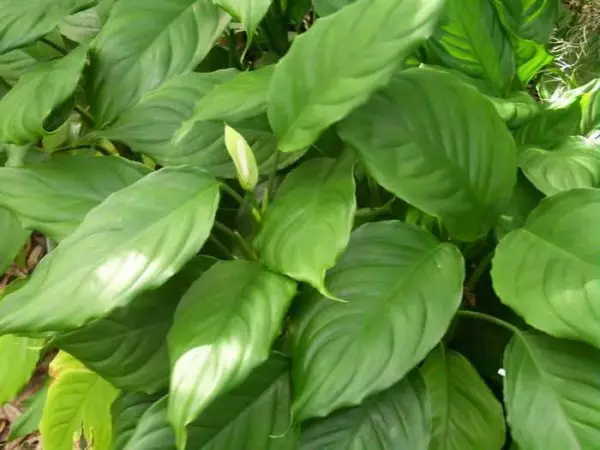
Aglionm "Modest"
- "Silver Queen": grows up to 45 cm, very demanding of lighting. It has a foliage of a pleasant shade of a mixture of blue and silver colors.
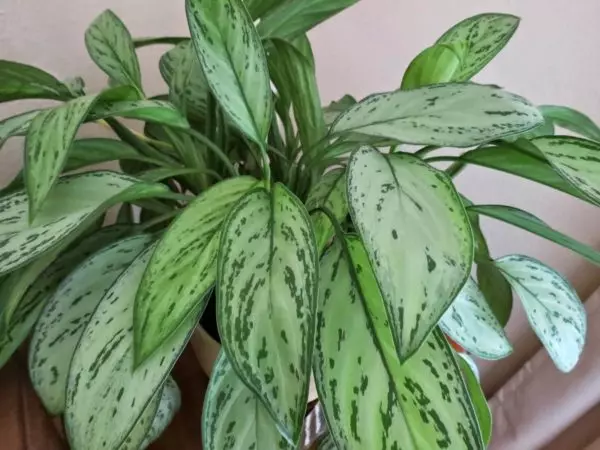
Aglionm "Silver Queen"
High Aglionmi.
High varieties of aglaonem are obtained by selective action with varieties that are distinguished by love for the shade, which explains their popularity. In addition, each type of variety is distinguished by high growth, thanks to which they look great as part of the composition and as a single flower.
Article on the topic: How to weave God's bobber from beads: Scheme with video for beginners
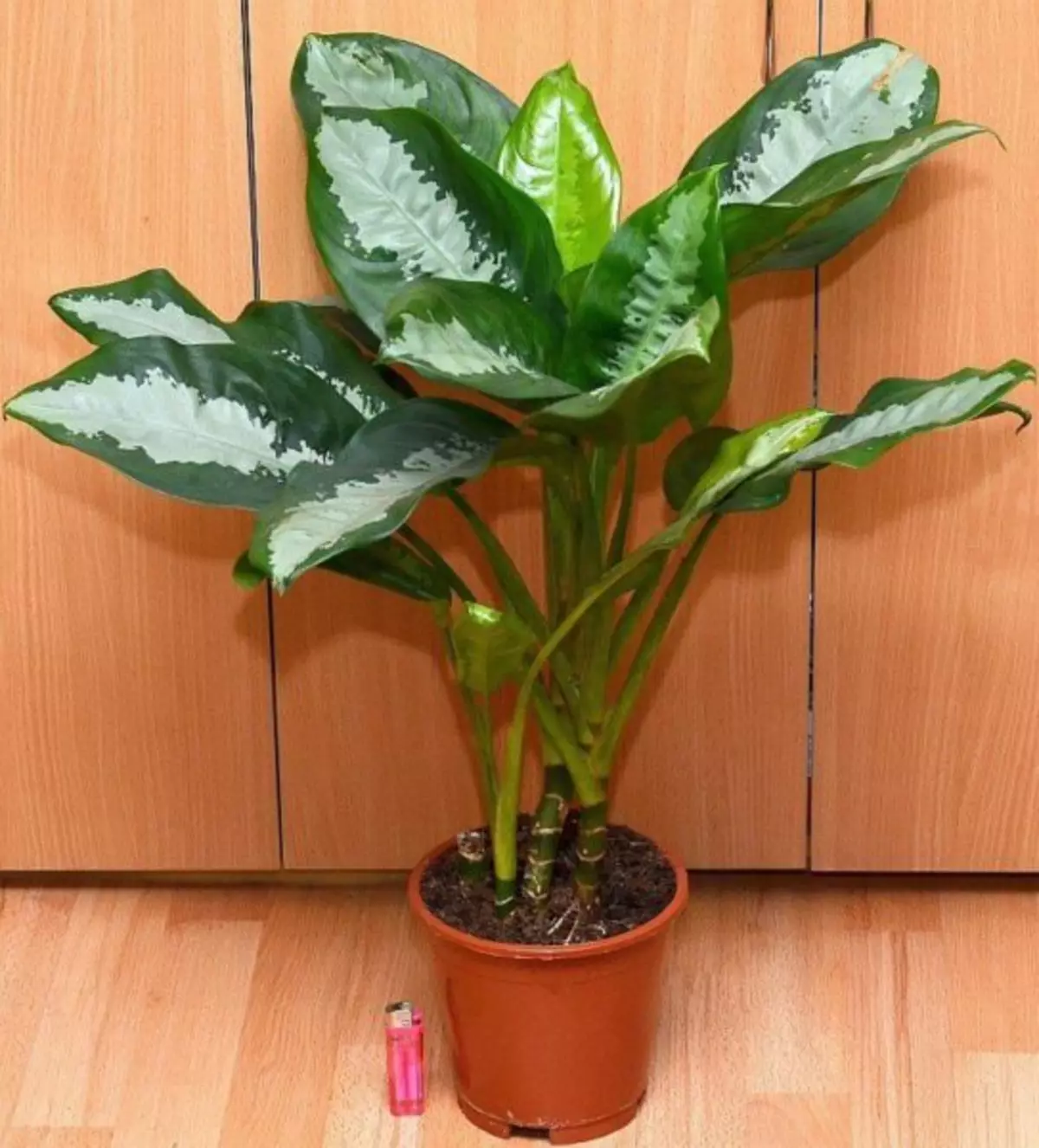
Aglionm "Pattaya Beauty"
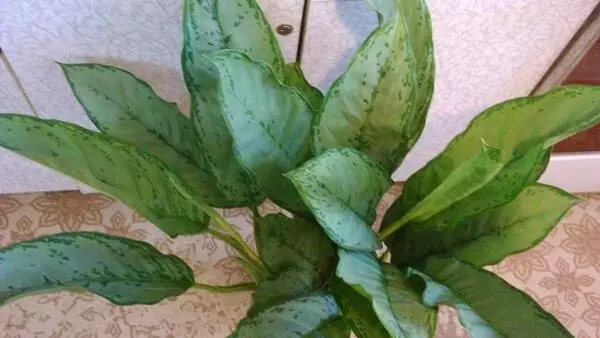
AGLONEM "FRIDMAN"
Aglionm "Silver Bay"
Where to put a flower of aglaone
Home flower Aglarion need to be placed according to whether this type loves the light or prefers shadow. Most species prefer shaded premises, so the windowsill on the south side of the house is unlikely to become a comfortable place for their cultivation.It is worth noting that the varieties, with red leaves, are better to carry the sun, they love good lighting. The general rule reads: if the foliage of the Aglionma is within the boundaries of the direct angle (at least 40 degrees), it means that it is optimal for it. In case the foliage falls below, the lighting should be slightly reduced.
The cultivation of Aglarion in the summer involves some additional blackout, in the winter, on the contrary, you need to add a little light.
Temperature mode
It is believed that the ideal temperature for growing agolatemes will be a range of 20 to 25 degrees. Ideal will be 18 degrees Celsius. Although in the winter period, with a lack of watering, the flower can be left for short periods of time and at a temperature of about 10 degrees.
Sharp changes in temperature regime, as well as drafts, can become destructive for this plant. Therefore, it is impossible to allow their occurrence. It is important to take into account the level of humidity that should be high. To do this, you can spray a plant from the sprayer, parallel to the foliage of the accumulated dust.
If in the summer Aglanommia needs to be sprayed periodically, then in the season of active work of heating systems, measures to moisturize the premises and plants in particular, it is necessary to strengthen. It works well the potted pot with a flower on the pallet, in which water is nanite. Naturally, the pot itself touch the surface of the water should not. Occasionally, you can arrange tropical rain for plants under the shower.
Watering and subordinate
Care for Agronima at home can not be called very difficult, rather, it brings pleasant troubles, which a hundredfold is rewarded with the contemplation of a magnificent flower.Watering Agronami is different from the season:
- In the spring and summer, when the time of active vegetation occurs, it is necessary to conduct active watering and plant care. Water irrigation is carried out immediately, as the upper part of the substrate dries.
- In the fall and winter, watering is carried out a little less often, with an interval in two days.
It is important to water the aglanoma only with water, which previously sat down and has a room temperature. Do not stand too much or overcoating the soil, it can badly affect the plant.
As for fertilizers, here is an important condition - this is the absence of lime in any sets for feeding. You can care for the flower using fertilizers with potassium, nitrogen and other trace elements.
It is very important to add fertilizers not only in the soil, but also by spraying on the foliage, which will allow it to actively gain power. The best time to make feeding from spring (March) to the end of summer (August). You need to do it twice a week, immediately after watering, during when the sun does not fall on the flower. In winter, it is not recommended to feed the plant.
How to make agolaoney more busy
Aglaionm is not growing at a big pace, so that its foliage develops high quality and richly, it is important to keep the roots in a close pot. The main thing is that in its day there are holes for ventilation.
Article on the topic: Art objects with their own hands for a garden and a house with a photo and video
Make a plant bush will help such tricks:
How to care for a plant at different times of the year
Aglionma, like other plants, is sensitive to the time of year. Care in different seasons behind this flower is slightly different:How to transplant agolate
Aglionma's transplantation has its meaning, the blooming stem will not be happy to delight the grain of foliage in a close pot. Moreover, young plants transplant annually, due to the speed of their growth, and mature - a little less often. It can be noted such principles for the transplantation of this plant:
- Soil: The substrate should be crumbly, as for heather or azaleas. A mixture of humus, sand and charcoal, mixed with the ground, is perfect.
- Pot: a young plant is enough of a diameter of 12 cm, and about 18 cm mature. It should not be too deep.
- Drainage is required, you can add a little pebble into the ground.
- Time: The greatest benefit from resettlement is achieved if it is carried out at the very beginning of spring. At the same time, you can carry out the division of the bush to shoots and sear them separately to increase bush.
- After resetting, after 3 weeks, you need to eat the soil in pots. You can do this by using such funds: "Lagnogumat"; "Agrikola"; "Effectton".
Aglionmia diseases and pests
Aglionma, like other bedroom plants, is exposed to disease and pests with which it is required to conduct timely struggle to prevent the death of the flower.Table: Errors in care and their elimination
| Problems | The reasons | Elimination |
| Dry tips of foliage | Perhaps the room is very dry air | Conducting foliage spraying with warm water |
| Leaves twist, they formed brownish rims | Periodic joints and unstable air temperature | Eliminate drafts, push the pot with a plant from the window |
| White spots appear on the foliage | Burn solar rays | Hide the plant from direct sunlight, after time to spend a spraying with warm water |
| Plant ceases to grow, the leaves acquire a brown shade | Watering with cold and hard water | Watering with water, which necessarily defended for 1-2 days |
| Liquid droplets are collected on the foliage | Excessive watering, excess nitrogen in the soil | Remove fertilizers with nitrogen, follow the regularity of watering |
| Sheet starts shrust | Plant is too often watering, low air temperature | Adjust the temperature or rearrange the plant to another room, control the intensity and frequency of watering |
| Foliage loses color brightness | The flower is in the shade, lack of trace elements | Do not allow the disease, feed the flower. Add Artificial Right Light |
| Flower is not growing | The pot is too great | Change the pot to the smaller |
Table: diseases and pests of aglane
| Diseases and pests | Signs of infection | The reasons | Methods of treatment |
| Rust | Rusty stains on the bottom of the foliage | Fungus and lack of air traffic in the room | Remove patients leaves, organize ventilation. Processing the plant "Mankutyb" |
| Spotted leaves | Brown tint stains on the leaves that are gradually starting to mock | Fungus or excess watering | Optimize watering, remove the affected foliage. Conduct fungicidal processing |
| Rinch Skeley | Stays of the plant begin to refine | Soil is too moistened, in a stagnation room | Better get rid of the patient plant |
| Blackleg | Damage cutlery | Because of too wet and dense soil | Throw out infected steenok |
| Mealybug | At the leaves there is a raid resembling cotton | Too dry air indoors | 1. Missing flower from other plants. Delete or process all infected parts. 2. Insecticidation ("Commander" or "Phytoverm"). 3. Two week to repeat the processing to destroy the larvae. |
| Aphid | On shoots you can see small insects | Appears due to infected soil or plants | The use of insecticides: "Bolkla" or "Akarin". |
| Bellenka | White dots on the leaves, their deformation | The use of neonicotinoids, as well as the "sparks", "Intavir", with their mandatory alternation. |
Methods of reproduction of aglaway
This plant can multiply by all popular ways, among which the use of seeds, shilling and landing rhizomes.
Reproduction of seeds
The reproduction of Aglarion is available to be available with the help of seeds, it is not too time-consuming. This method allows you to get all the signs of the parent plant, and, it means, to perfectly adapt them to the surrounding space, the flowers will not experience difficulties with acclimatization. Nevertheless, the risk of foliage other than the parent, always exists.Make reproduction seeds like this:
- During the formation of fruits on an adult plant, you do not need to remove them until full maturation;
- When the fruits get red, they can be removed (when they touch, they should remain in hand);
- to multiply the plant is needed in the spring, by planting seeds into light soil and covers with polyethylene;
- We need to water the plants, we need to be gradually, but quite often;
- The secret of the germination of seeds in their planting immediately, after removal, because they quickly lose their qualities.
Cherenca
It is possible to transplant with the aglane by separating the cuttings. This type of reproduction allows you to grow a strong plant in a short time.
The design process is happening like this:
Using root
The breeding of aglaonema can be produced by dividing its rhizomes, a plant is suitable for this purpose, which has grown too much, releasing many young shoots. It is them that is used by choosing this method.The division needs to plant those shoots that are sufficiently developed, have strong foliage and healthy strong roots. Saplings need to carefully separate from an adult plant, divide them along the pots and carefully fall into the ground. Deepening, with 5-6 cm. After that, it is necessary to pour a plant abundantly.
To help in rooting Aglionmem, you can cover the seedlings with a polyethylene or a glass jar, creating a greenhouse effect with high humidity under it. Regular watering and spraying will help the plant actively develop and grow rapidly.
Poisonousness of Aglionmia
Aglionma, which refers to the family of aroid, like most of his other representatives, is a poisonous. This plant is considered dangerous to human health. However, not everything is so scary. For full poisoning, you need to eat several sheets, which is unlikely to make an adult.
Precautions:
- The plant needs to keep away from children, especially during the ripening of fruits that have a very attractive color;
- When working with the Agronima, the juice can be watched, which may be allocated (for this you need to wear gloves, look at the tools that are used), and not allow it to enter the mucous membranes of the body.
In general, the plant is not having a big danger, it is important to take place carefully to its placement, closely follow the children and teach them precautionary measures. After that, it will only remain enjoy the appearance of Aglionma, its picturesque, magnificent leaves and a bright coloring.
